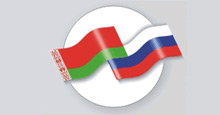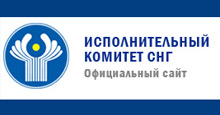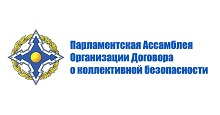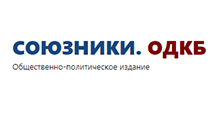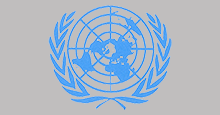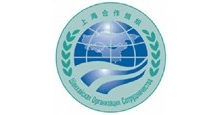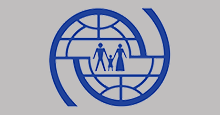The 23rd meeting of the Military Committee on military cooperation development among the CSTO member states under the supervision of the Chairman of the Military Committee, Chief of the General Staff of the Armed Forces of the Russian Federation - First Deputy Minister of Defense of the Russian Federation, Army General Valery Gerasimov, took place today via videoconferencing.
From April 8 to 11, 2024, the XXI International Seminar-Meeting on Combined Martial Arts with the heads of combat and physical training of the security ministries and agencies of the CSTO member states took place at the Park Hotel "Horizon", Odintsovo District, Moscow Region.
The event was addressed by Gennady Troislit, the Deputy Head of the Organizational and Planning Department of the CSTO Secretariat, and Oleg Ufimtsev, the President of the Russian Federation of Combined Martial Arts.
The Russian Federation will host a joint training "Indestructible Brotherhood-2021" with the CSTO Peacekeeping Forces from November 8 to 12
 01.11.2021
01.11.2021
The joint training "Indestructible Brotherhood-2021" will take place on November 8-12, 2021, in the Russian Federation as part of the joint operational-strategic training "Battle Brotherhood-2021".
A grouping of CSTO troops (Collective Forces) will practice the tasks of preparing and conducting a peacekeeping operation by the CSTO Collective Peacekeeping Forces at the Kazan Higher Tank Command School decorated with the Order of Zhukov.
The main objectives of the training are to improve the practical skills of the command and control officials of the CSTO Troops (Collective Forces) in the organization and command of subordinate troops when carrying out earmarked tasks, and also to improve the coordination of military units and subunits that are part of the CSTO CPF during a peacekeeping operation.
Military contingents of the member States of the Organization, military police units, task forces of the CSTO Joint Staff and the CSTO Secretariat, formations of internal affairs bodies (police), national guards, as well as authorized bodies in the field of prevention and liquidation of emergency situations are planned to participate in the training.
In the course of practical actions, the Peacekeeping Forces will practice operating a roadblock, performing tasks in a refugee camp, escorting humanitarian convoys, blockading a populated area, storming a building occupied by "militants," and freeing "hostages" and providing aid to the victims.
Representatives of the CSTO Parliamentary Assembly, the Republic of Serbia, the Republic of Uzbekistan and Mongolia, as well as the International Committee of the Red Cross and other international organizations were invited to the final stage of the training.
For reference:
The CSTO Peacekeeping Forces is a system of peacekeeping contingents designed to participate in the CSTO peacekeeping operations.
In order to staff the Peacekeeping Forces, member States of the Organization, in accordance with their national legislation, allocate peacekeeping contingents on a permanent basis.
Peacekeeping contingents of the CSTO member States are specially trained military, militia (police) and civilian personnel, as well as assets provided by the member States of the Organization to the CSTO Peacekeeping Forces.
The total strength of the CSTO Peacekeeping Forces is about 3,600 people.
For participation in a particular peacekeeping operation, the Collective Peacekeeping Forces are created from among the Peacekeeping Forces.
The CSTO Collective Peacekeeping Forces are units (subunits) from the peacekeeping contingents allocated by the member States of the Organization for the period of the peacekeeping operation.
The composition, structure, and size of the Collective Peacekeeping Forces are determined by decision of the CSTO Collective Security Council for each individual peacekeeping operation, based on the scope of the tasks being carried out and the specific situation in the conflict zone.
The composition of the Collective Peacekeeping Forces may include military, police (police), and civilian personnel, that are forming:
Unified Command;
combat units (subunits);
a group of military observers;
militia (police) units;
units (subunits) of combat, technical and logistics support;
other bodies and units ensuring the fulfilment of the assigned tasks.
When conducting a peacekeeping operation, the Collective Peacekeeping Forces may be charged with the following tasks:
to monitor compliance with the terms of the truce and cease-fire agreement, to help create a secure environment in crisis areas by providing a visible presence of the Collective Peacekeeping Forces;
designation of zones of responsibility, separation of the conflicting parties, creation of demilitarized zones, zones of separation, humanitarian corridors, assistance in deconcentration of forces of the parties, prevention of their movements and clashes in these zones;
creating conditions for negotiations and other measures to peacefully resolve the conflict, restore law and order, and ensure the normal functioning of state and public institutions and organizations;
establishing and investigating ceasefire and truce violations;
control of the terrain and activities of the population in the area of responsibility, countering mass disturbances, and promoting human rights;
control over the elimination of fortifications, barriers and minefields;
participation in mine clearance of terrain and facilities;
protection and defense of vital facilities;
taking measures to ensure communication between the conflicting parties and the security of official meetings between them at all levels;
control of transportation, suppression of illegal import and export of military equipment, weapons, ammunition and explosives;
ensuring safe transit of all types of transport and functioning communications;
facilitating the establishment of normal contacts between the populations of the conflicting sides;
ensuring safe conditions for the return of refugees;
providing, within its capabilities, medical assistance to the civilian population in the conflict zone, including in the event of environmental disasters or natural calamities;
ensuring unimpeded deliveries of humanitarian aid;
other tasks assigned to the Collective Peacekeeping Forces by a decision of the CSTO Collective Security Council or the relevant Mandate, in the interests of conflict resolution.
_________________________________________________________________
The Joint Press Center of the CSTO training "Indestructible Brotherhood-2020"

